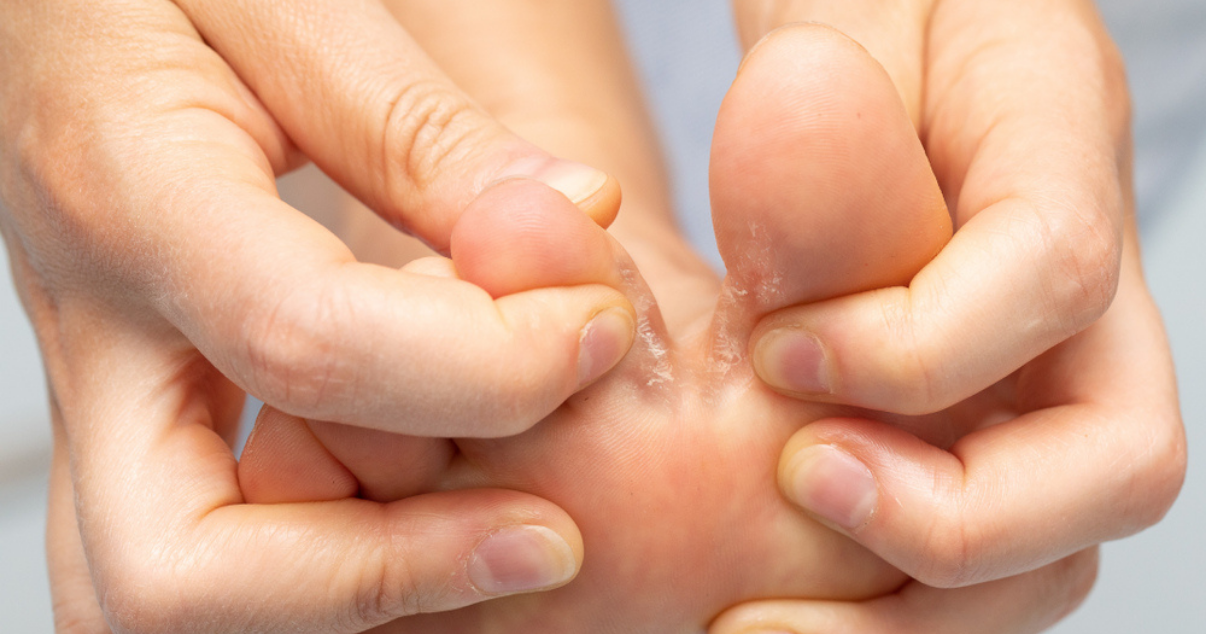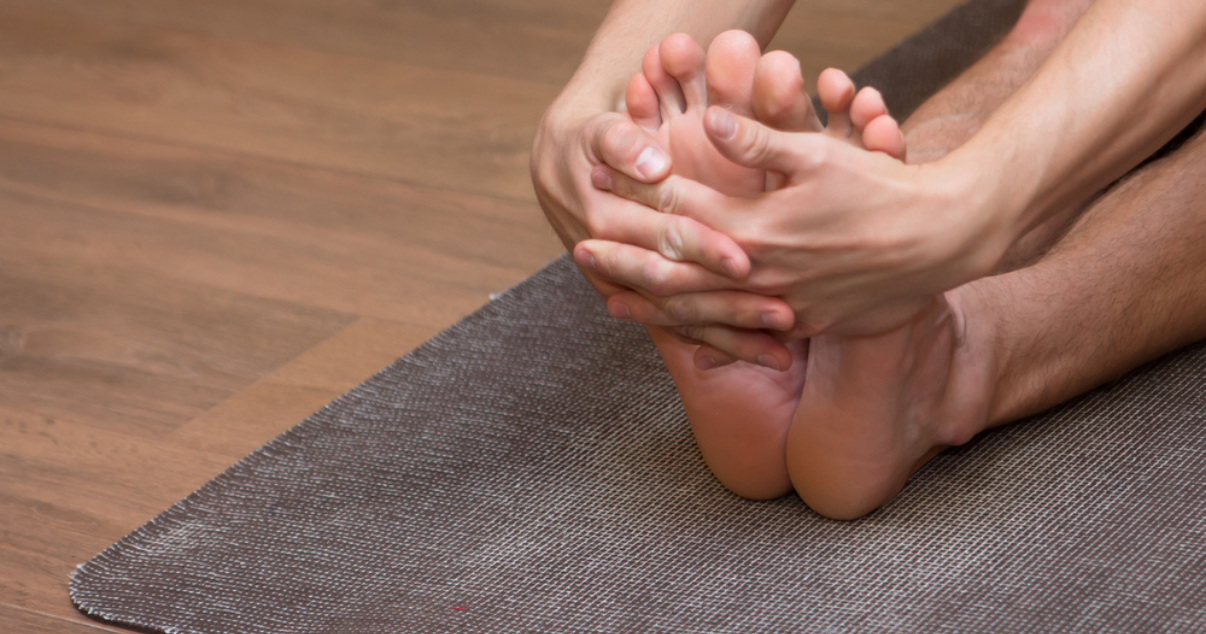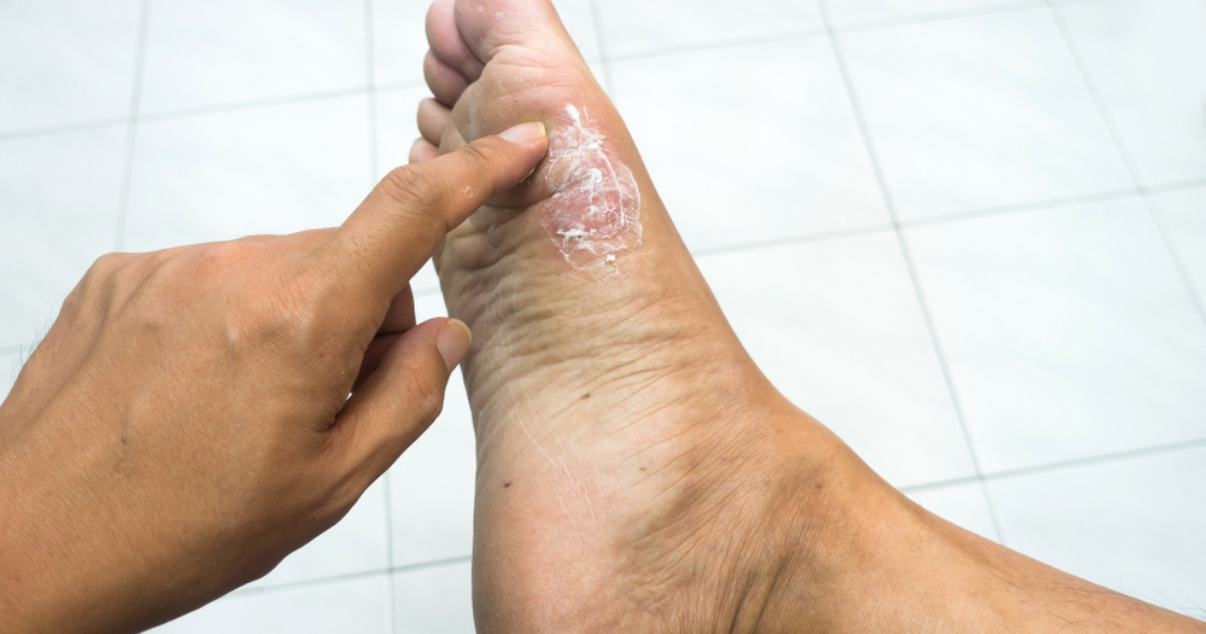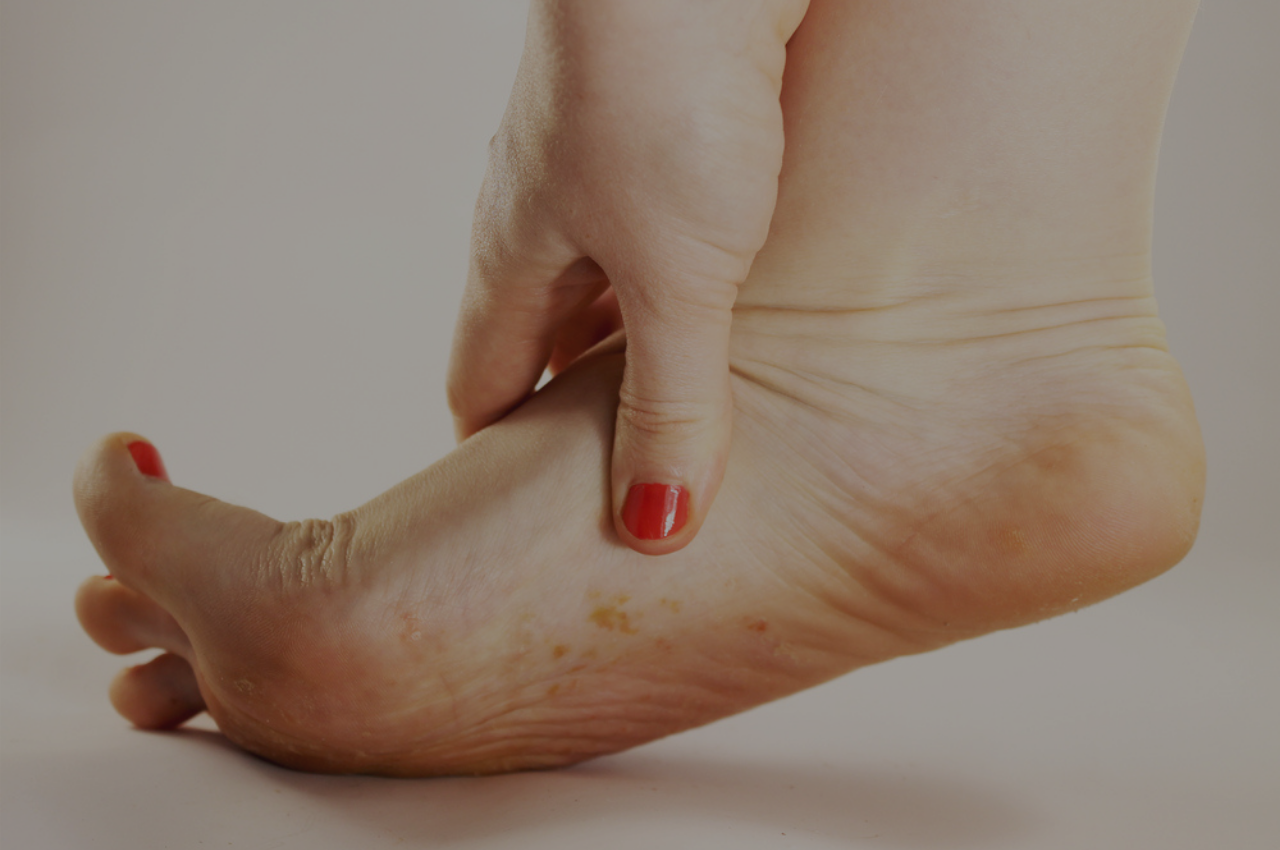It’s easy to confuse foot eczema with athlete’s foot. Since both conditions often cause red, scaly, itchy skin, it can be easy to mix up the two conditions. So if you’re experiencing these uncomfortable symptoms, how can you tell whether it’s eczema or an athlete’s foot fungal infection? Read on to find out how you can differentiate the two conditions, care for your feet, and prevent athlete’s foot fungal infections.
Eczema or Athlete’s Foot
While eczema may have similar symptoms to the fungal foot infection, the cause is different and it requires a different treatment plan. Known medically as foot dyshidrotic eczema, eczema of the feet is an inflammatory skin condition that is not contagious, but rather a reaction commonly linked to allergies, genetics, and stress.
While athlete’s foot does produce redness and irritation, it is a contagious infection caused by the fungus tinea cruris. Though tinea cruris is a naturally occurring foot fungus, the infection is caused by allowing the fungus to propagate in sweaty socks and shoes, or by coming into contact with a concentrated source of the fungus. Both infected individuals and objects they have come into contact with can serve as concentrated sources of athlete's foot fungus.
To learn more about what causes athlete's foot and how to prevent it, take a look at our post How to Prevent Athlete's Foot.
In both conditions, skin is often red, scaly, blistered, and cracked. In severe cases, the skin can even ooze. Sufferers of eczema and athlete’s foot usually experience both burning, and itching sensations as a result of the conditions. Both athlete’s foot and eczema can develop into chronic conditions if they don’t receive proper treatment quickly.
While both conditions are fairly similar in their symptoms, the location of the affected areas can give away whether you’re suffering from eczema or athlete’s foot.

With eczema you are more likely to find cracked and red skin on the top of your feet, and in some cases, eczema on the bottom of the foot. Conversely, an athlete's foot fungal infection usually affects the skin in between a person’s fourth and fifth toes, sometimes migrating to the bottom or side of the foot. In more severe cases athlete’s foot symptoms can also include thick, flaky, and/or discolored nails.
While recognizing these symptoms should give you a general understanding of both athlete’s foot and eczema, if you’re not sure what’s causing your skin irritation it’s best to arrange an appointment with your doctor for a personalized consultation to insure that you are adhering to the correct treatment.
Foot Eczema and Athlete’s Foot
While eczema and athlete’s foot are separate skin conditions with their own symptoms and treatment plans, if you have been diagnosed with eczema you have an increased chance of getting skin infections like athlete’s foot fungal infections. This is why it’s even more important that you follow some athlete’s foot prevention measures. Don’t worry, these measures are part of a simple foot care regimen and are easy to incorporate into your daily routine.

Athlete’s Foot Prevention Tips
• Don’t touch or scratch your feet. Touching your feet can spread germs to the area of cause an athlete’s foot infection to spread to other parts of your body. Scratching an itch on your feet can aggravate eczema or a foot fungus infection and make the condition more uncomfortable.
• Wash your hands after touching your feet to prevent the spread of athlete’s foot to other areas of your body.
• Wear breathable footwear made from natural materials. Leather, canvas, and other natural materials are far more breathable than synthetic materials, allowing your feet to stay dryer and to prevent fungal infections. For the same reason, it is also preferable to buy socks made of natural materials, like cotton.
For more tips on preventing sweaty feet, read our blog, How to Get Rid of Sweaty Feet.
• Wash your socks and shoes regularly. Following a workout, it’s essential that you change out of your shoes and socks immediately. You should then wash and dry your feet thoroughly and change into a clean pair of socks. It’s best to let your shoes dry fully before wearing them again. It’s also beneficial to wash your shoes regularly to prevent the fungus from lingering in your shoes.
Keep in mind that many of these foot care tips, including avoiding scratching your feet and wearing comfortable and clean footwear, are also helpful for eczema!

Athlete’s Foot Treatment
If you are positive that you have athlete’s foot, it’s important to treat it as soon as possible to prevent it from developing into a chronic fungal infection or from spreading to other areas of the body.
Your best treatment option is Silka Ⓡ Antifungal Cream. Containing terbinafine as the active ingredient, it requires just 7 days of treatment compared to other products on the market that need several weeks of treatment. Make sure to take a look at our guide to using Silka Ⓡ Antifungal Cream as part of a successful treatment regimen.
As mentioned before, if you are unsure if your symptoms could be caused by foot eczema or athlete's foot, be sure to see your doctor so that you receive the proper treatment.
Take care!




